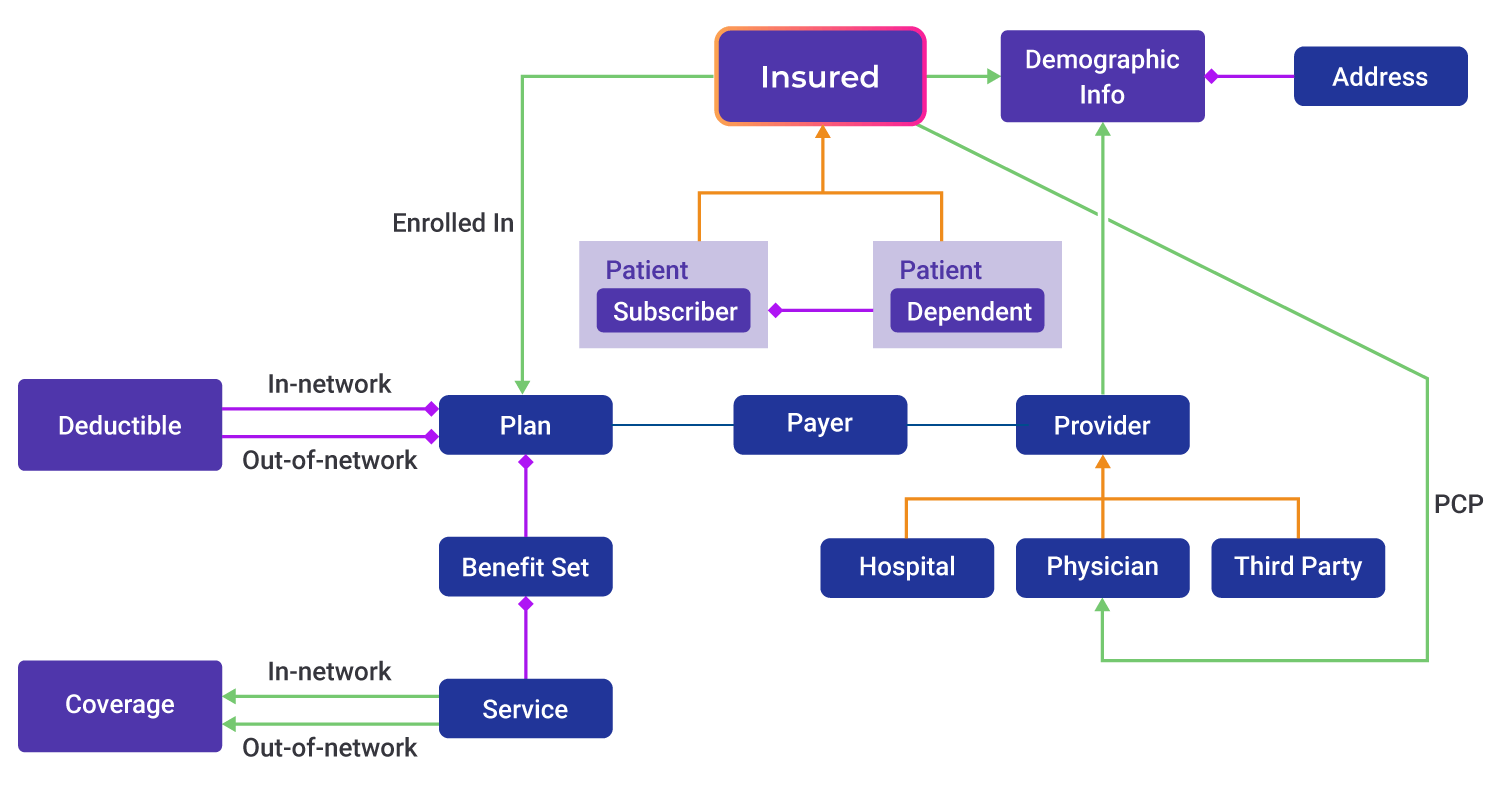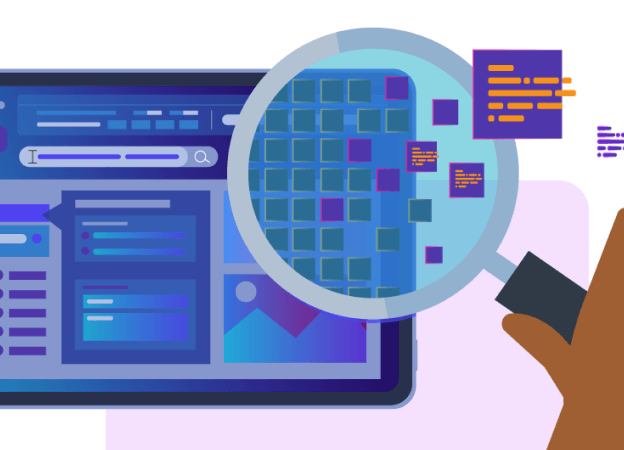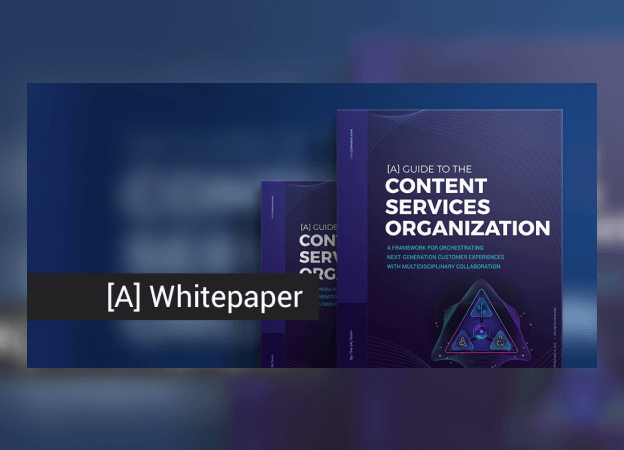Understanding Domain Modeling: A Pathway to Effective Content Structure
Have you ever wondered how companies organize their content and foster user-friendliness? The secret lies in domain modeling—the one ingredient that enables organizations to create efficient and tailored content structures for their users. But domain modeling goes beyond that. It aligns teams, transforms brand strategies, and takes organizations to new levels of success.In this article, we will explore the benefits and challenges of domain modeling and highlight its significance for organizations’ growth. We will also delve into the concept and explain why it is relevant for effective information architecture decisions.
Domain Model: A Foundation for Success
When we talk about domain modeling it is not the same as domain names. Domain names are used by computers to find the right web server whereas domain models are used by humans to find the right content and data-sets.Domain modeling true power lies in the deep understanding it brings to the table. It is all about representing concepts and relationships in a subject area. Like creating a visual map of the world your business operates in. When organizations fully grasp their domain, they gain the ability to make informed decisions and customize offerings to meet audience needs.
Domain modeling also serves as the rock-solid foundation for effective content strategy. This visual representation of your content ecosystem ensures comprehensive understanding and alignment among all involved stakeholders. Picture it like building bridges that connect everyone, fostering smooth and productive content creation and management.
Step 1: Defining the subject area
When beginning domain modeling, the initial step is to define your subject area. This involves identifying the scope, focus, and limits of the domain. Defining scope and boundaries is akin to gaining a broader perspective and assembling the puzzle pieces for a holistic model. For example a company might define the scope of their domain model to encompass its core business functions, customer interactions, product lifecycle, and relevant industry trends.Take an electronics technology company, as an example. They could use domain modeling to refine their product strategies. By defining the scope to cover the entire product lifecycle and focusing on customer interactions, market trends, supply chain, and compliance, they were able to identify valuable opportunities. The boundaries of their domain established a clear framework within which to capture and organize concepts, entities, and relationships.
Step 2: Identify the Key Concepts
Next, we move on to identifying the key concepts that form the backbone of your subject area. These concepts are like the central ideas that hold everything together. For instance, in e-commerce, it could be "products," "customers," and "orders." This holistic approach helps you cater to your audience's needs beyond just your website.Step 3: Define Relationships and Attributes
Now, we will define the relationships and attributes between the key concepts, like connecting the dots to build a structured and interconnected model. This step also involves content modeling, where we determine the key elements, structure content hierarchically, and establish relationships. Think of it as building a strong foundation for content creation that ensures consistency, scalability, and flexibility.Step 4: Validate and Refine the Model
Once we have our domain model, it's time for validation and refinement. We'll review the model, gather feedback from stakeholders, and make adjustments. This iterative process ensures accuracy and relevance, fine-tuning our creation for optimal performance.Periodic refinement enhances the effectiveness and adaptability of a domain model. This validation and refinement process establishes the truth of the subject area and fosters alignment among stakeholders before delving into content creation. By providing a common language and understanding, domain modeling serves as a foundation for decision-making processes, reducing potential misunderstandings and conflicts. This inclusive approach encourages stakeholder engagement, instilling a sense of ownership and responsibility, ultimately leading to a more collaborative and effective content strategy.

Example adapted from “Sample domain model for a health insurance plan”. 2009
Examples of Domain Models
To create a domain model, we first look at the main things we want to talk about. These are called "entities." For example, when talking about books, we have entities like "Book," "Synopsis," “Genre,” and "Review." Each of these entities has special information attached to them.Now, imagine we have many books and many reviewers writing reviews for them. We want to show how they are connected or related. That's where relationships come in. They tell us how things are connected in our domain model. For example, one book can have many reviews from different reviewers. That's a "one-to-many" relationship.
Similarly, a medical practitioner can help many patients, but each patient is linked to one specific medical practitioner. That's another "one-to-many" relationship.
So, a domain model helps us keep things organized by putting all our entities into their special groups. And it shows us how these things are connected, making it easier to understand and work with the information.
Books Domain Model
1. Book Information Domain
- Title: The title of the book.
- Author: The author(s) of the book.
- Genre: The category or genre the book belongs to (e.g., fiction, non-fiction, fantasy, romance).
- Publication Date: The date when the book was published.
2. Book Reviews Domain
- Reviewer's Name: The name of the reviewer who wrote the review.
- Rating: The rating given to the book by the reviewer (e.g., on a scale of 1 to 5 stars).
- Review Text: The written review or comments provided by the reviewer.
3. Book Sales Domain:
- Number of Copies Sold: The total number of copies of the book sold.
- Revenue Generated: The total revenue generated from the sales of the book.
Healthcare Domain Model
1. Patient Information Domain- Patient ID: A unique identifier for each patient.
- Personal Details: Name, date of birth, gender, and contact details.
- Medical History: Records of past illnesses, surgeries, allergies, and chronic conditions.
- Vital Signs: Regularly measured physiological indicators like blood pressure, heart rate, temperature, and respiratory rate.
2. Medical Practitioners Domain
- Practitioner ID: A unique identifier for each healthcare professional.
- Name and Credentials: The name of the medical practitioner along with their qualifications and specialization.
- Contact Information: Address, phone number, and email of the practitioner.
- Work Schedule: Availability and working hours of the practitioner.
3. Medical Records Domain
- Diagnosis and Treatment: Information about diagnoses made and treatments provided for specific health issues.
- Medication: Details of prescribed medications, dosage, and frequency.
- Lab and Test Results: Results of laboratory tests, radiology reports, and other diagnostic procedures.
- Progress Notes: Ongoing notes documenting the patient's progress during treatment.
4. Healthcare Facilities Domain
- Facility ID: A unique identifier for each healthcare facility.
- Name and Location: The name and physical address of the facility.
- Contact Details: Phone number, email, and website of the facility.
- Services Offered: Description of medical services and specialties available at the facility.
Students Domain Model
1. Student Information Domain- Student ID: A unique identifier for each student.
- Personal Details: Name, date of birth, gender, and contact details.
- Address: The residential address of the student.
- Parent/Guardian Details: Contact information and names of parents or guardians.
2. Academic Records Domain
- Courses and Enrollments: Details of the courses the student is currently enrolled in and their academic history.
- Grades and Transcripts: Records of grades earned in each course and overall academic performance.
- Attendance: Information about the student's attendance in classes and academic activities.
3. Extracurricular Activities Domain:
- Clubs and Organizations: Participation in clubs, sports teams, or other extracurricular activities.
- Achievements: Recognition and awards received for achievements in extracurricular activities.
4. Financial Information Domain:
- Tuition and Fees: Details of tuition costs, fees, and payment history.
- Scholarships and Financial Aid: Information about scholarships, grants, and financial assistance received.
What are the benefits of a domain model?
A well-defined domain model offers numerous benefits for organizations, including:- Driving Innovation and Brand Opportunities
- Improved Content Structure and Navigation
- Designing Future-Friendly Content Structures
- Enhanced Content Governance
- Early Design Problem Identification
If you want to structure your content effectively and excel in your content strategy, domain modeling is the way to go. By following the steps and embracing the benefits, your organization can achieve long-term success, engage users, and communicate like a pro.
To help you navigate the principles and practices of domain modeling and leverage its benefits we want to provide you with a trusted and reputable resource. Carrie Hane, the expert content strategist, consultant, and trainer, along with Mike Atherton, co-authored the book "Designing Connected Content: Plan and Model Digital Products for Today and Tomorrow." This book is your companion for creating successful and user-centric digital products using domain modeling techniques.
Done right, the domain model is one of the most pivotal artifacts of any content project, informing everyone’s work. Every design, every piece of content, and all code can be traced back to the model. Getting alignment on the model helps your team get passionate about the subject. Support that subject with content and software, and you help your audience understand and explore what they care about.
Hane and Atherton share their expertise from working with various clients and projects, making this book a must-have resource for anyone looking to build better digital products with a solid foundation in content strategy. By adopting the principles and methodologies outlined in 'Designing Connected Content,' organizations can collaborate effectively with cross-functional teams, ensuring content is efficiently managed and delivered to the right channels at the right time.
Challenges of Domain Models
While domain models offer fantastic benefits, there are some challenges we might encounter.Time-Consuming Creation and Maintenance
Creating a comprehensive and accurate domain model takes time and effort. As the domain evolves with time, maintaining the model up-to-date can be a bit demanding.Non-Technical Stakeholder Understanding
Domain models are typically designed for technical stakeholders, and that might make it a bit challenging for non-technical individuals to grasp them fully. Ensuring successful collaboration means communicating the essence of the model effectively to a broader audience.Keeping Up with Changing Domains
One more challenge to tackle is keeping up with changing domains. The organization is constantly evolving, and domains can change due to business requirements, market trends, or technological advancements. To stay on top of the game, we need to make sure the domain model stays up-to-date with these changes. This means giving your model a little upgrade to keep it relevant and useful.Enhancing Customer Experiences through Domain Models and [A]
As discussed, organizations face challenges in creating and maintaining domain models, but [A] is a powerful ally that helps tackle these complexities and unlock the full potential of omnichannel content. Although domain models and omnichannel content may appear distinct, they are integral to the content intelligence program, and their collaboration creates opportunities for businesses to enhance customer experiences and streamline content delivery across channels.One of the main benefits of this partnership is personalized content that boosts engagement and builds brand loyalty, driving conversions in the end. Creating custom content for different channels may be demanding, but [A] makes it easier by identifying the necessary adjustments for each platform.
To succeed in omnichannel strategies, ensuring content reusability is key, and [A] helps integrate modular content components within the domain model. This approach simplifies managing updates and maintaining consistency, saving significant time and resources.
[A] also plays a vital role in effective content governance, providing a robust framework for content management. By defining roles, permissions, and workflows within the domain model, [A] ensures that the right content is delivered to the right channels at the perfect moment, delivering enhanced customer experiences.
The heart of [A]'s capabilities lies in the Core Content Model (CCM), a single, integrated model that defines how content assets will be structured throughout the content lifecycle. Serving as a foundational representation, the Core Content Model establishes a baseline from which all content representations across the content lifecycle can be converted. By adopting the Core Content Model, businesses can streamline content creation and management processes, ensuring uniformity and efficiency in content delivery across channels.
[A] simplifies content modeling processes, creating domain models and content models, and connecting them with headless and composable content systems. Whether building a basic website domain model or an intricate enterprise-wide model, [A] empowers development teams to excel in managing omnichannel content strategies.
So, if you're ready to elevate your content strategy, let's embark on this journey together with [A] as your trusted companion! Get ready to unlock the full potential of domain models and revolutionize your omnichannel content game!



